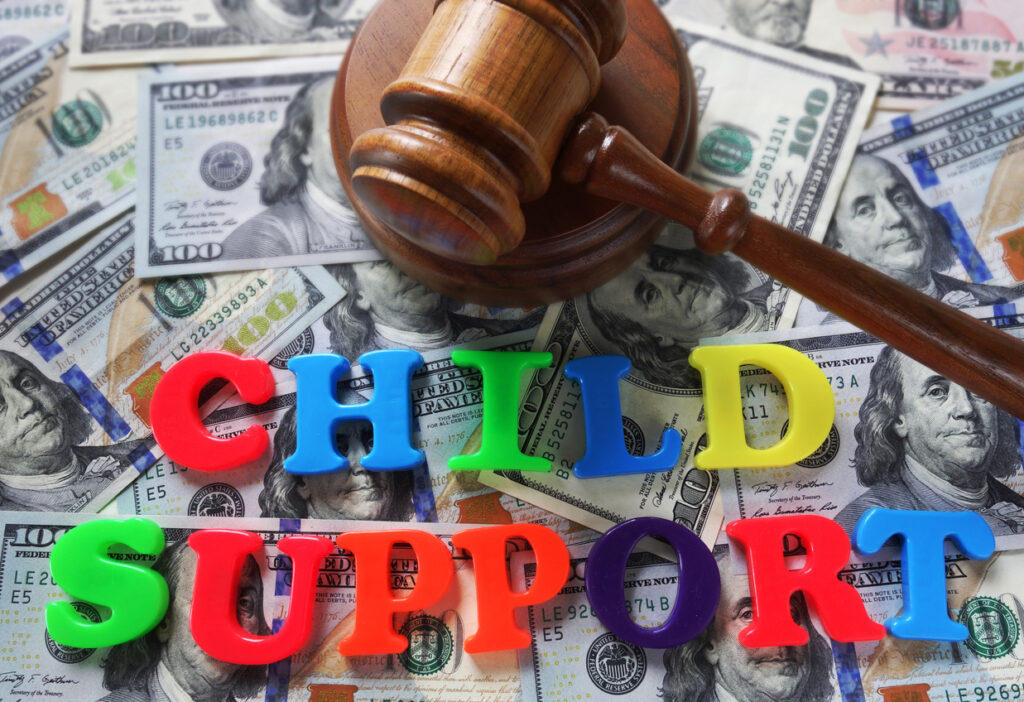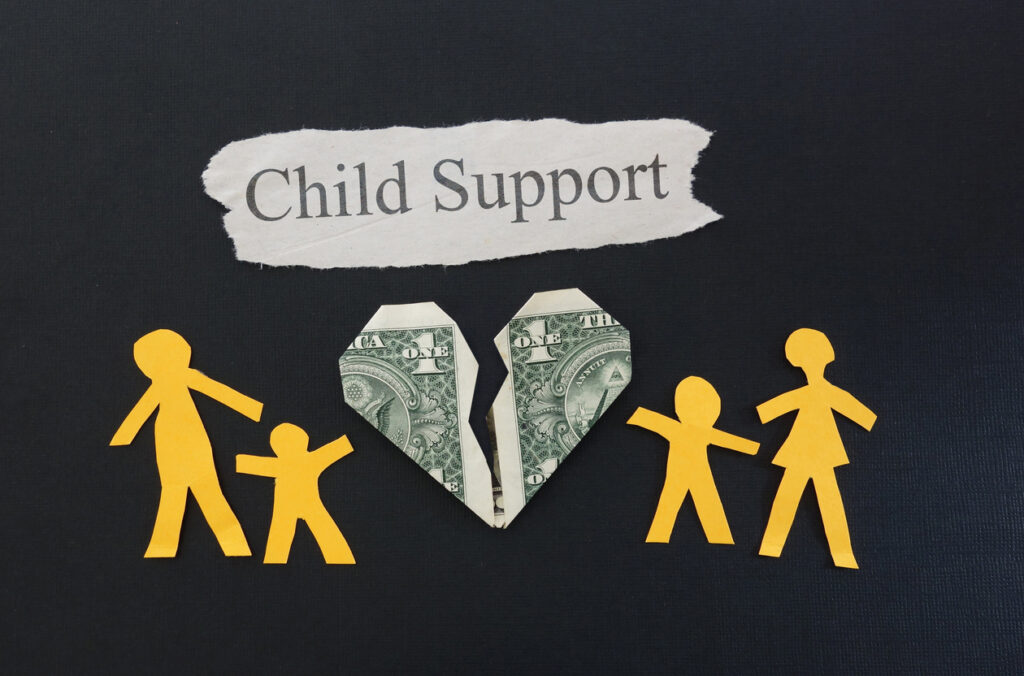Filing a joint tax return can be an effective way for married couples to maximize deductions and potentially receive a larger tax refund. However, when one spouse owes back child support, that joint filing decision can result in an unexpected loss of funds. The IRS tax refund for child support becomes a target for seizure under the Treasury Offset Program, even if only one spouse is responsible for the debt.
Understanding what happens to a joint refund in this scenario is essential. Many taxpayers assume the IRS will automatically separate their portions of the refund, but this is not the case. Without proper action, both spouses could lose access to the full refund, regardless of individual financial responsibility. This article explores the key processes, legal rules, and common misconceptions about how a joint return affects the IRS tax refund for child support.
How the IRS Handles Child Support Debt When You File Jointly
The Treasury Offset Program allows federal and state agencies to collect past-due debts by intercepting federal tax refunds. One of the most common uses of this program is for enforcing unpaid child support. When a couple files jointly, the IRS tax refund for child support may be taken in full—even if the child support debt belongs solely to one spouse.
The IRS does not proactively assess individual ownership of the refund. Instead, it views the refund as a shared asset between both filers. As a result, the entire amount is vulnerable to interception unless the non-liable spouse takes specific legal steps to protect their share.
Filing Jointly Without Addressing Child Support Debt Is Risky
Many couples are unaware that filing a joint return without filing additional paperwork can expose their entire refund to seizure. The spouse who is not legally responsible for the IRS tax refund for child support obligation may be caught off guard when their refund disappears.
This is particularly problematic when the non-liable spouse depends on their portion of the refund to cover essential expenses. The government does not offer automatic protection or split the refund based on who earned more income. If your spouse owes child support, your joint refund is at immediate risk unless you take action to shield your share.
The Injured Spouse Allocation: What It Does and Doesn’t Do
The primary tool available for protecting a non-liable spouse’s portion of the IRS tax refund for child support is the Injured Spouse Allocation. This is filed using Form 8379, and it allows the IRS to separate the refund and allocate the portion owed to the non-debtor spouse back to them.
However, this form is not a guarantee that your refund will be preserved in full or processed quickly. You must meet specific criteria and file Form 8379 either with your joint return or after the refund has already been intercepted. In some cases, delays can stretch to 14 weeks or longer, leaving the non-liable spouse waiting months to recover their share.
For the IRS to approve this allocation, the injured spouse must prove they earned income, contributed to tax withholdings, and are not legally liable for the IRS tax refund for child support debt. If those elements are not met, the entire refund may remain seized.

Misunderstanding Refund Ownership Can Lead to Loss of Funds
Another issue arises from misunderstanding how refunds are treated legally. Some assume the refund belongs entirely to the spouse who earned the income or had more taxes withheld. But a refund from a jointly filed return is considered jointly owned—unless otherwise proven.
Because of this, courts and federal agencies will not make assumptions about ownership. If you don’t separate your tax liabilities through proper filings, your share of the IRS tax refund for child support is subject to seizure, even if you didn’t owe the debt or agree to pay it.
Filing Separately as an Alternative to Joint Returns
One strategy to prevent refund seizure is to file separately rather than jointly. By doing this, the non-liable spouse files their own return and avoids entanglement with the other spouse’s child support debt. This effectively removes the non-liable partner’s refund from the IRS tax refund for child support seizure process.
However, separate filings often result in higher tax liability. The benefits of joint filing—such as better standard deductions and access to various credits—may not be available when filing separately. Couples must weigh the financial cost of filing separately against the risk of losing a joint refund to child support enforcement.
Timelines and Communication Gaps Compound the Risk
Even if the injured spouse files Form 8379 correctly, they may still wait months for a resolution. During this period, both spouses might assume the refund is being processed normally. Only after receiving a smaller refund or none at all do many realize the IRS tax refund for child support has been intercepted.
To complicate matters, communication between the IRS and child support enforcement agencies varies. Once a debt is certified, the IRS cannot override it. You must contact the agency responsible for the debt directly to correct any errors or disputes.
For more clarity on how child support agencies coordinate these offsets, refer to the Office of Child Support Enforcement on HHS.gov, which outlines administrative processes and collection authority.
Why Filing Form 8379 With the Original Return Is Crucial
Filing Form 8379 with the original return can help expedite the process of separating the refund. Waiting until after the IRS tax refund for child support has been intercepted may delay your relief significantly. However, even proactive filing does not always prevent the seizure from happening first.
If your refund has already been taken, you can still file the form and request your portion be refunded. You will need to provide evidence, such as income documentation and W-2 forms, to demonstrate that you are not liable for the child support debt. This proof must be detailed and complete to support your claim.

Joint Filers Must Take Responsibility for Legal Consequences
The reality is that filing a joint return is a financial decision with legal implications. If one spouse owes a certified child support debt, the government is legally permitted to collect it from any available refund tied to that return. The IRS tax refund for child support rules are clear: joint filers share the refund unless a court or the IRS says otherwise.
Assuming that marriage or shared filing status somehow shields either spouse from enforcement actions is incorrect. Legal responsibility may not extend to both partners, but financial consequences often do—especially when it comes to joint refunds.
Can You Recover Your Share After the Refund Is Taken?
If your refund has already been intercepted, you may still be able to recover your share. However, you’ll need to act quickly. Filing Form 8379 and submitting supporting documentation to the IRS is your primary option.
You may also consider contacting the child support agency to verify the accuracy of the debt. If the obligation has already been satisfied or incorrectly certified, the agency may request a reversal of the offset. However, this process is slow and not guaranteed. The IRS does not take action on its own to verify whether a debt was validly submitted for offset.
For an in-depth breakdown of how this offset system functions, this overview of the IRS tax refund for child support explains key legal details and recovery options in joint filing situations.
Disputing an Offset Requires Documentation and Patience
You cannot dispute a refund seizure with the IRS alone. The child support agency that submitted the claim must be the one to release or adjust the offset. If you disagree with the child support amount or believe the debt was entered in error, formal challenges must be raised at the state level.
In the meantime, your IRS tax refund for child support may be held, and any attempt to expedite the process through IRS channels will likely fail. The IRS merely executes the offset—it does not arbitrate disputes about the underlying child support obligation.
The Legal Framework Behind the Refund Interception Process
The legal authority for intercepting refunds comes from the Debt Collection Improvement Act of 1996, which allows federal agencies to collect past-due obligations through tax refund offsets. Child support debts are treated as a priority under this law.
Once the child support agency certifies the debt through the Treasury Offset Program, the IRS is legally required to redirect the refund—even if you filed jointly. This enforcement mechanism is designed to ensure custodial parents receive court-ordered support, but it also means joint filers must be especially careful with their tax planning.
The U.S. Government Accountability Office has also analyzed refund offset trends and found that delays and disputes are common. If you’re part of a joint filing scenario and face an offset, expect delays, required documentation, and multiple agency interactions.

What You Can Do Before Filing Your Return
To avoid surprises related to your IRS tax refund for child support, take the following pre-filing steps:
– Review whether your spouse owes past-due child support
– Check your eligibility for Injured Spouse Allocation
– File Form 8379 with your return, not after
– Consider filing separately if the risk of offset is too high
By preparing early, you minimize the risk of seizure and increase the likelihood of recovering your portion of the refund. Ignoring these steps could result in a complete loss of your return, even if you personally have no legal obligation to pay child support.
Conclusion: Understand the Risks of Joint Filing When Child Support Debt Exists
Filing jointly can bring financial benefits, but it also brings risks—especially when child support debt is involved. The IRS tax refund for child support process treats a joint return as a shared financial obligation, regardless of which spouse owes the arrears.
If you’re planning to file jointly and one spouse owes child support, be proactive. File Form 8379, consider filing separately, and review the debt status with your state agency. Most importantly, don’t assume your share of the refund is protected without taking action. Awareness and preparation are your best defenses against losing your refund due to a child support offset.

Leave a Reply